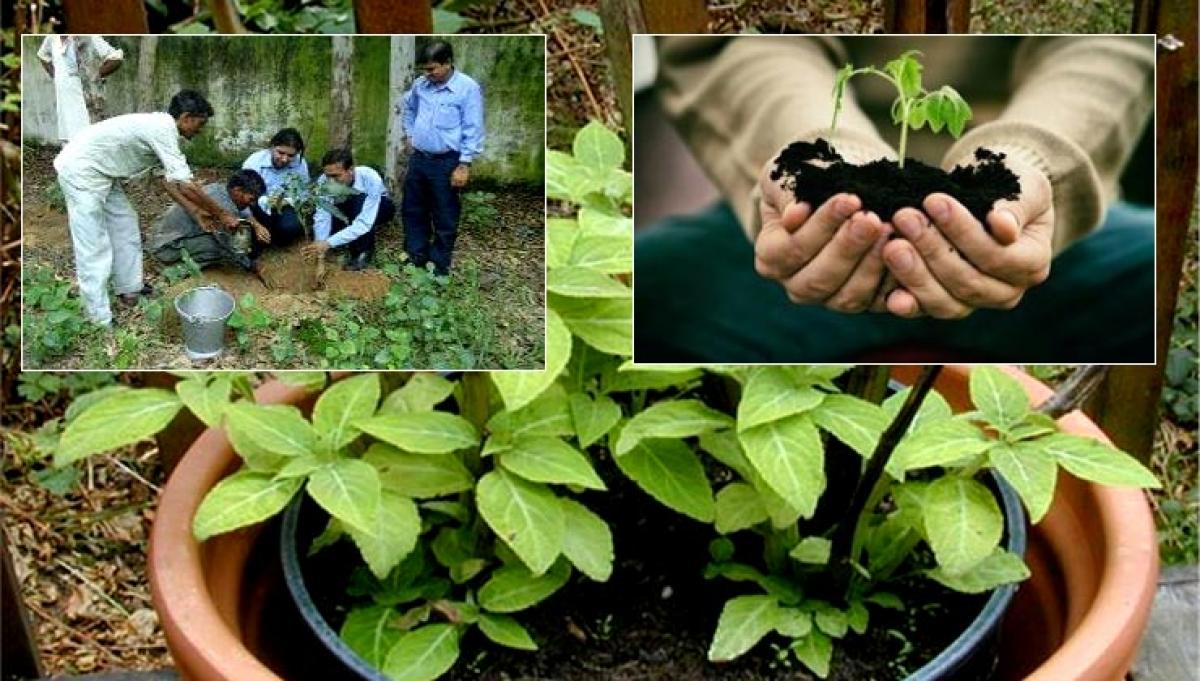Live
- Tumakuru implements emergency response system for women’s safety
- Sujeet Kumar elected to RS unopposed
- ACTO, two others held for Rs 4 cr fraud
- Adopt tech-based probe process: DGP Khurania
- Bhubaneswar: Four fraudsters held for operating fake gaming app
- Majhi asks new recruits to shun corruption
- Modi’s bold decision: Bommai hails PM
- Devotees experience normal rush at Tirumala amidst long queues
- Two BJP MLAs defy party decision to stage walk-out from Assembly
- Reality show contestant booked for misuse of explosives
Just In

Urban Heat Can Be Contained Only With Plants, Says NASA. The presence of vegetation in urban areas - along the roads, in the parks and in your neighbourhood..
Washington: The presence of vegetation in urban areas - along the roads, in the parks and in your neighbourhood - can limit city heat effect to a great extent, says a NASA study.
Using multiple satellites' observations, researchers found that areas in the US covered in part by concrete surfaces had a summer temperature 1.9 degrees Celsius higher than surrounding rural areas.
.jpg)
In winter, the temperature difference was 1.5 degrees Celsius higher in urban areas. At the human level, a rise of one degrees Celsius can raise energy demands for air conditioning in the summer from five to 20 percent.
"This has nothing to do with greenhouse gas emissions. It is in addition to the greenhouse gas effect. This is the land use component only,” said Lahouari Bounoua, research scientist at NASA's Goddard Space Flight Centre in Greenbelt, Maryland.
The urban heat island effect occurs primarily during the day when urban impervious surfaces absorb more solar radiation than the surrounding vegetated areas, resulting in a few degrees temperature difference. The urban area has also lost the trees and vegetation that naturally cool the air. "Anywhere in the US, small cities generate less heat than mega-cities,” Bounoua said.
The reason is the effect vegetation has on keeping a lid on rising temperatures. "The amount and type of vegetation plays a big role in how much the urbanisation changes the temperature,” added research scientist and co-author Kurtis Thome. As a by-product of photosynthesis, leaves release water back into to the atmosphere in a process called evapotranspiration, which cools the local surface temperature the same way that sweat evaporating off a person's skin cools them off.
Trees with broad leaves have more pores to exchange water than trees with needles, and so have more of a cooling effect. "So even though 0.3 degrees Celcius may seem like a small difference, it still may have impact on energy use,” Bounoua said, especially when urban heat island effects are exacerbated by global temperature rises due to climate change.
Understanding the tradeoffs between urban surfaces and vegetation may help city planners in the future mitigate some of the heating effects, the authors noted in a paper that appeared in the journal Environmental Research Letters.

© 2024 Hyderabad Media House Limited/The Hans India. All rights reserved. Powered by hocalwire.com







